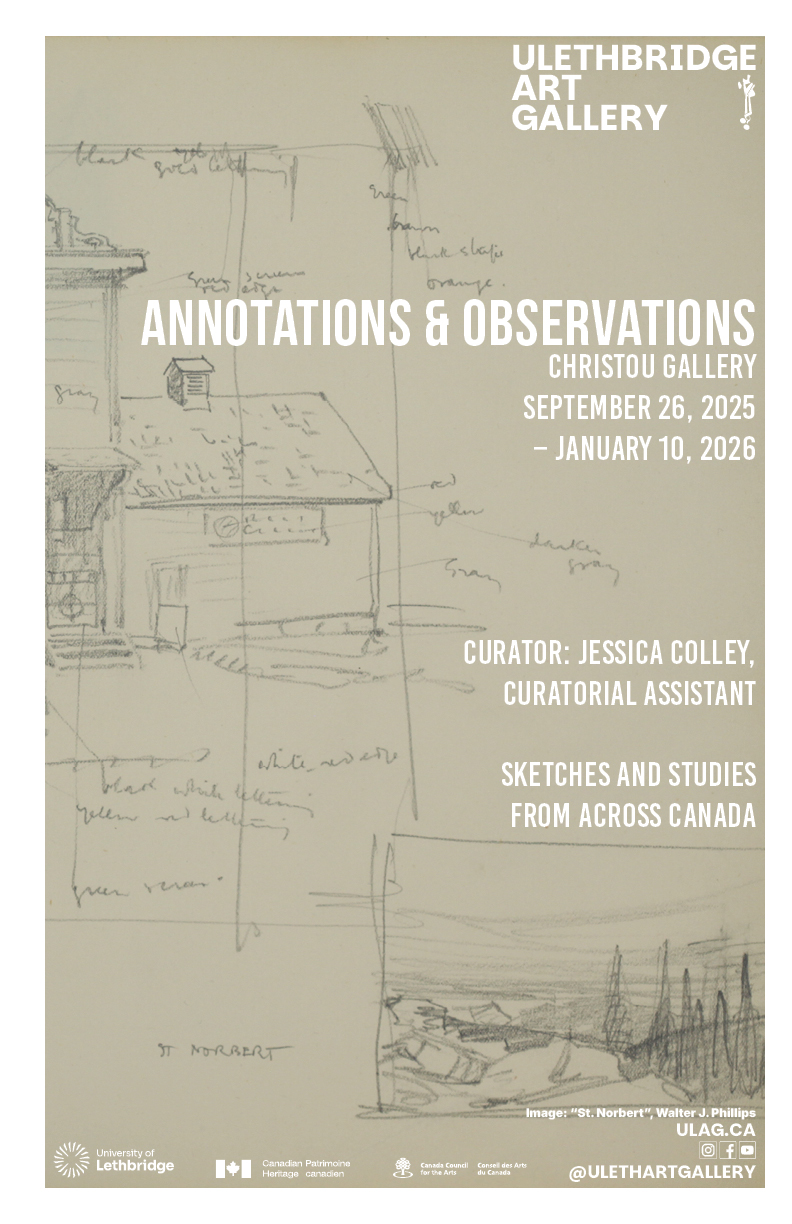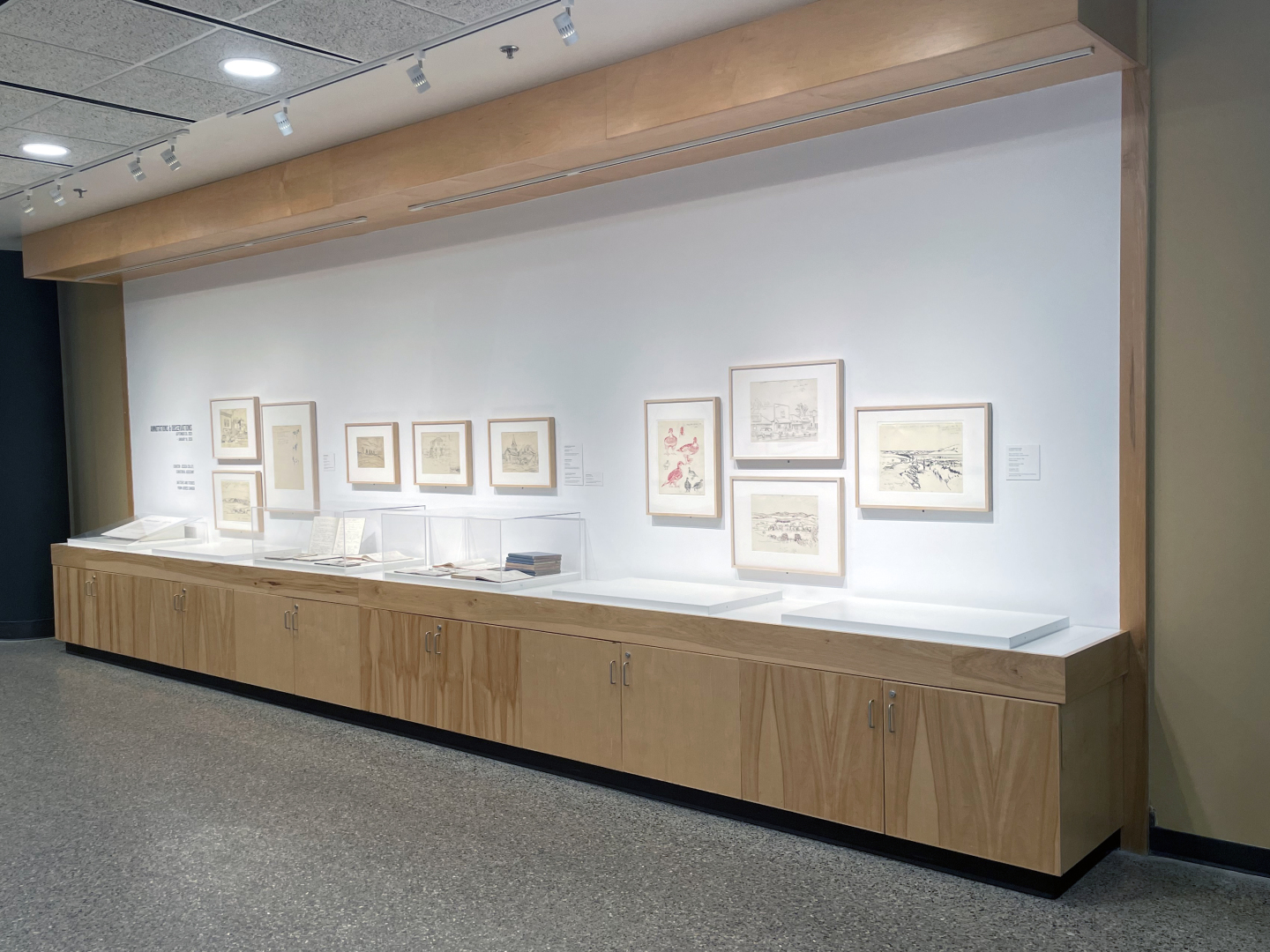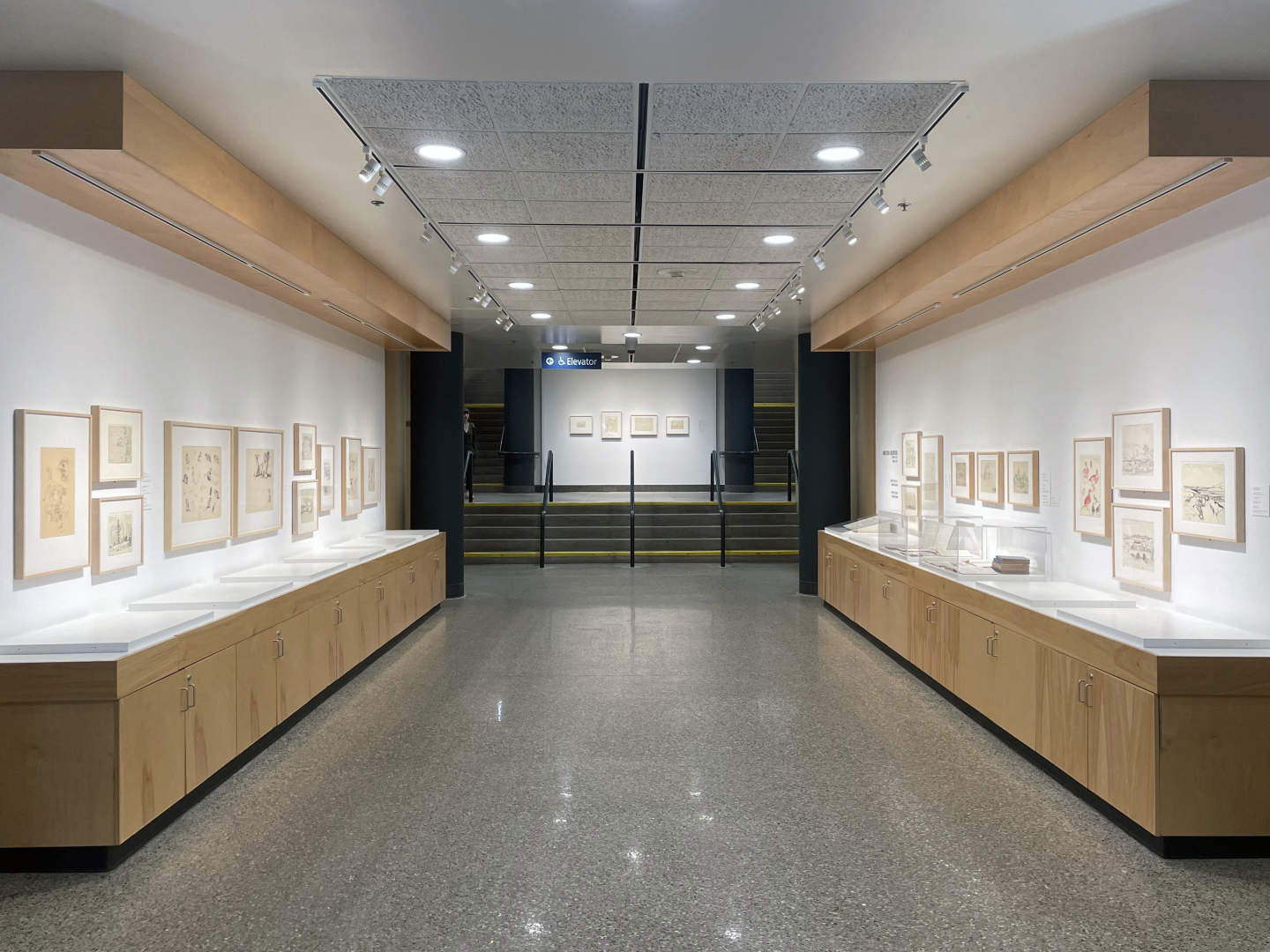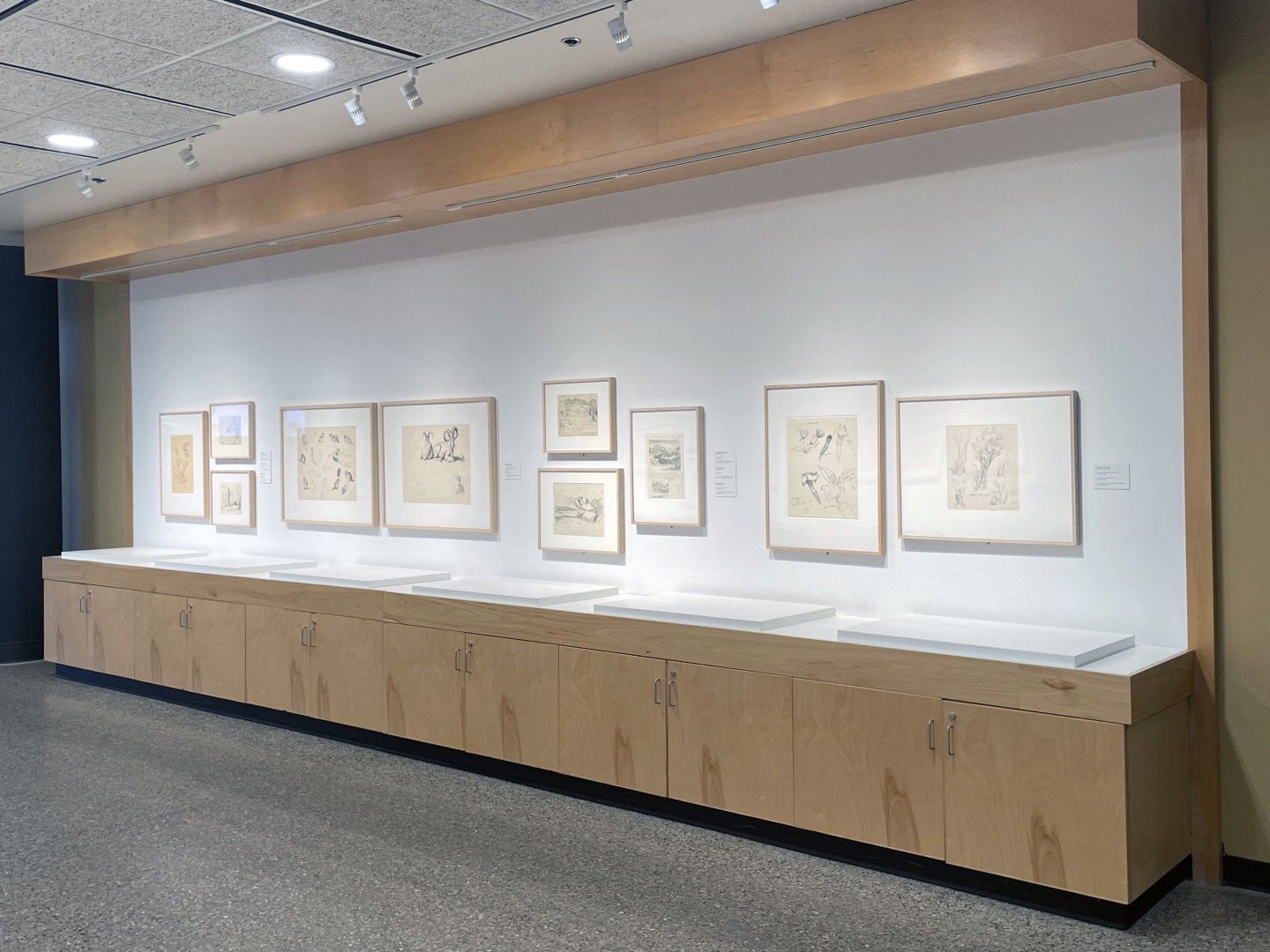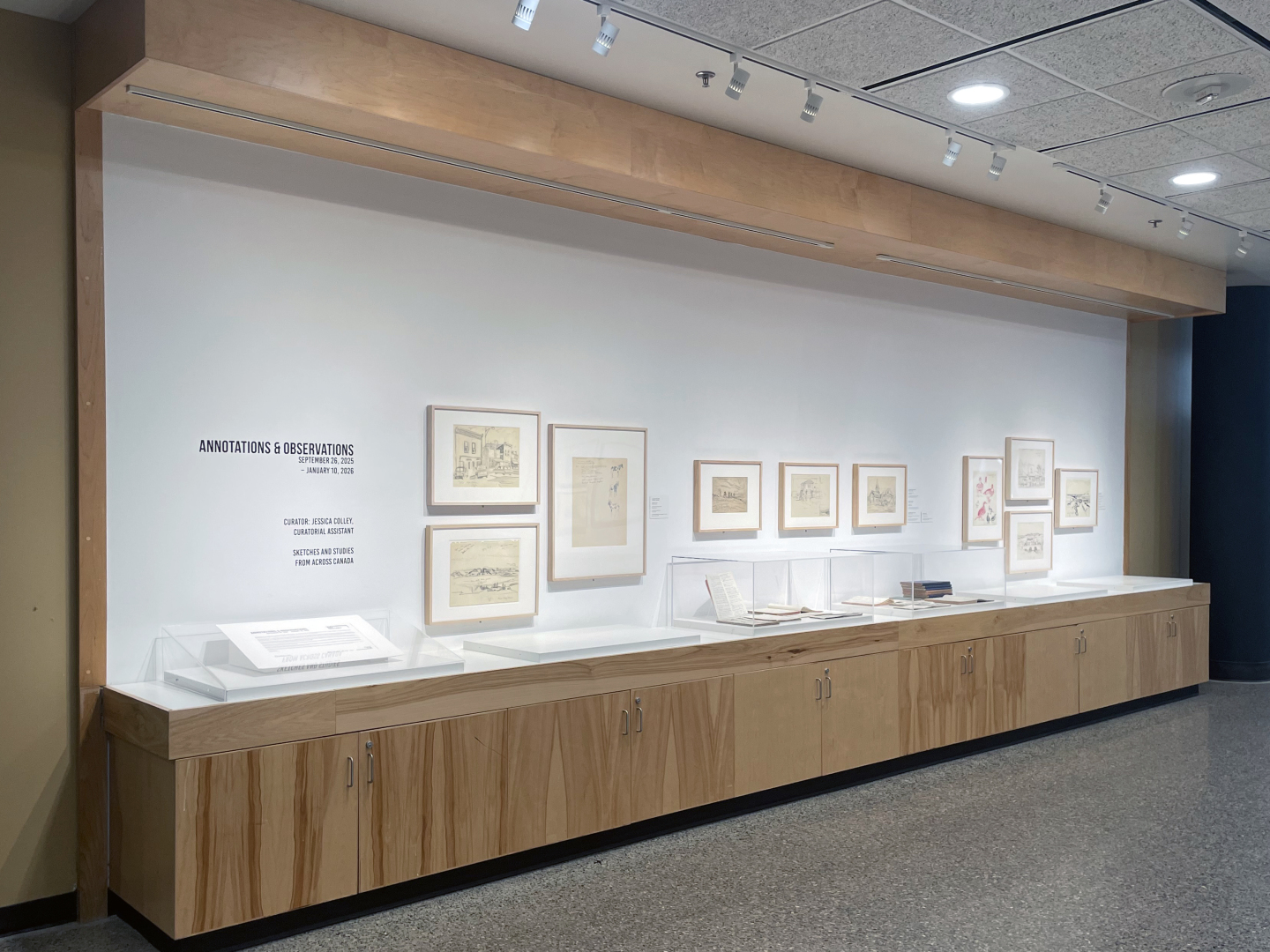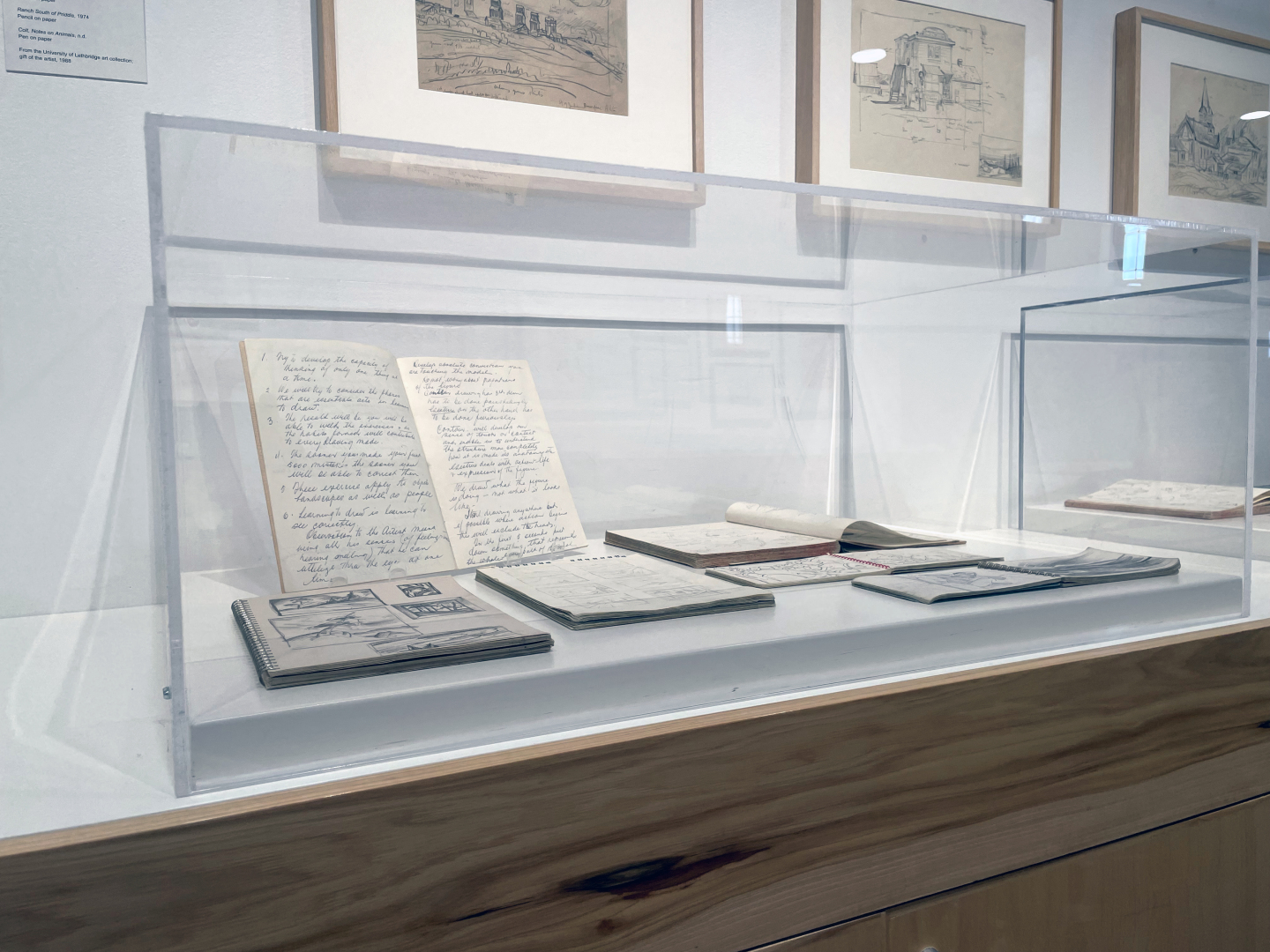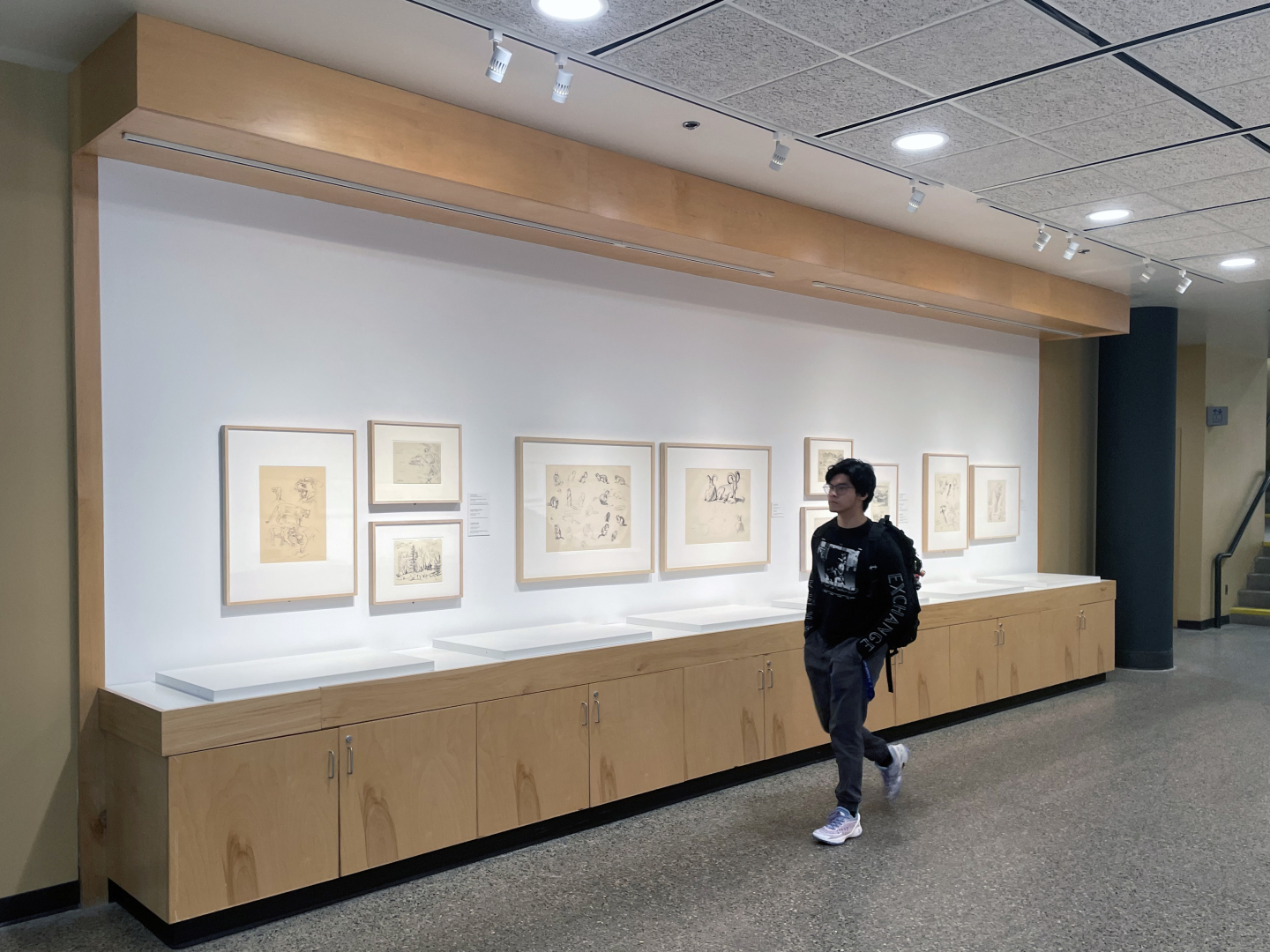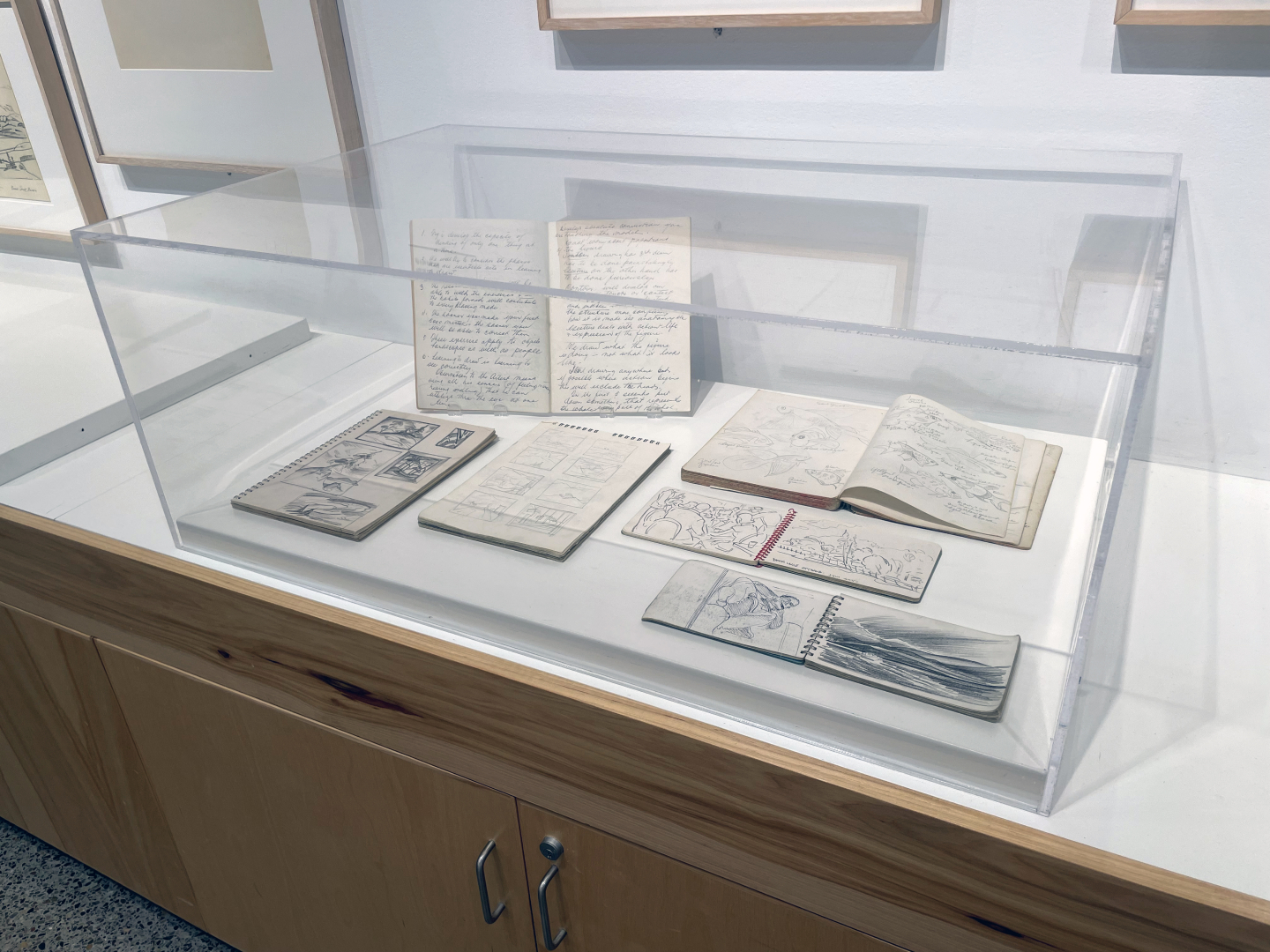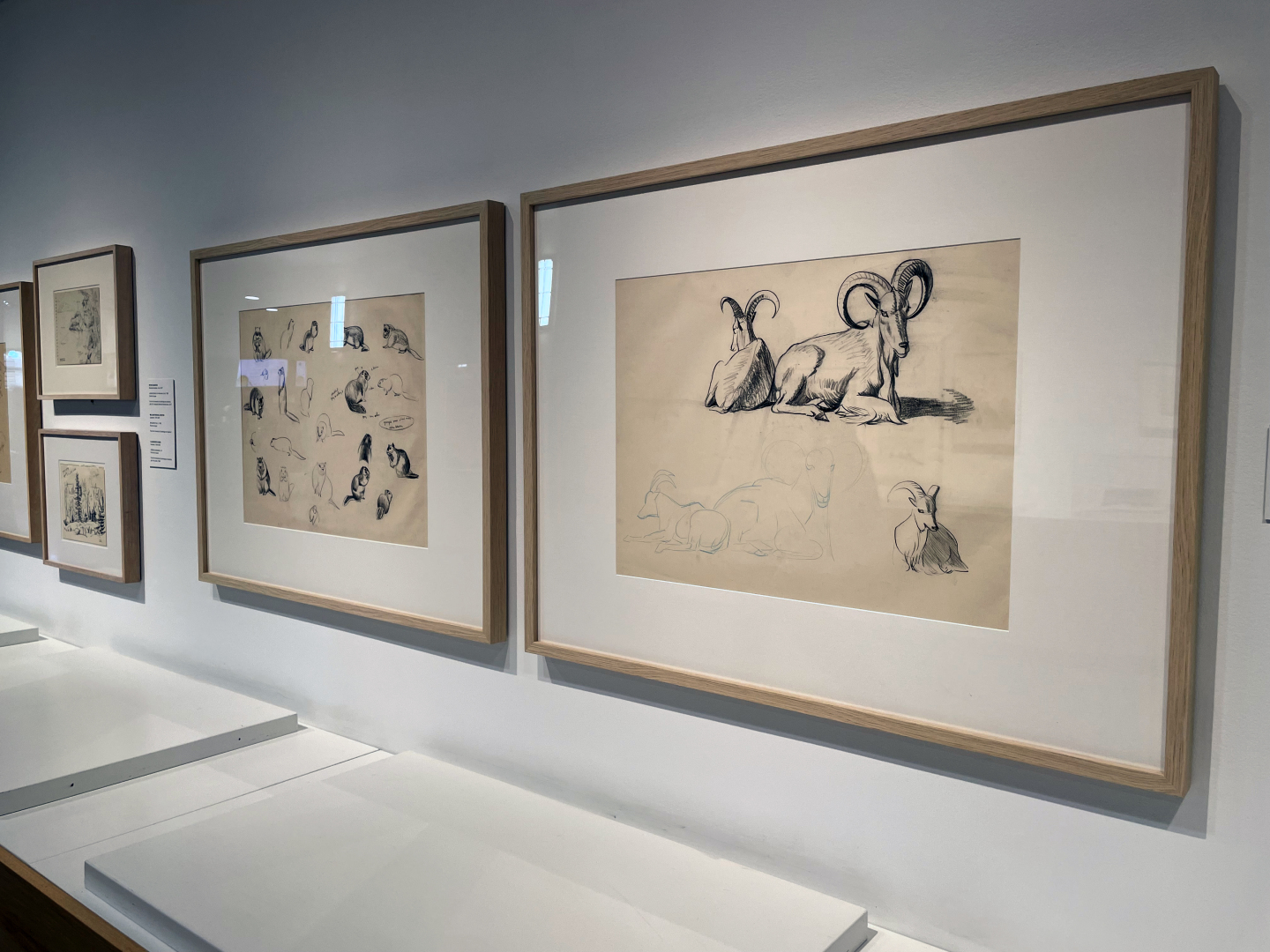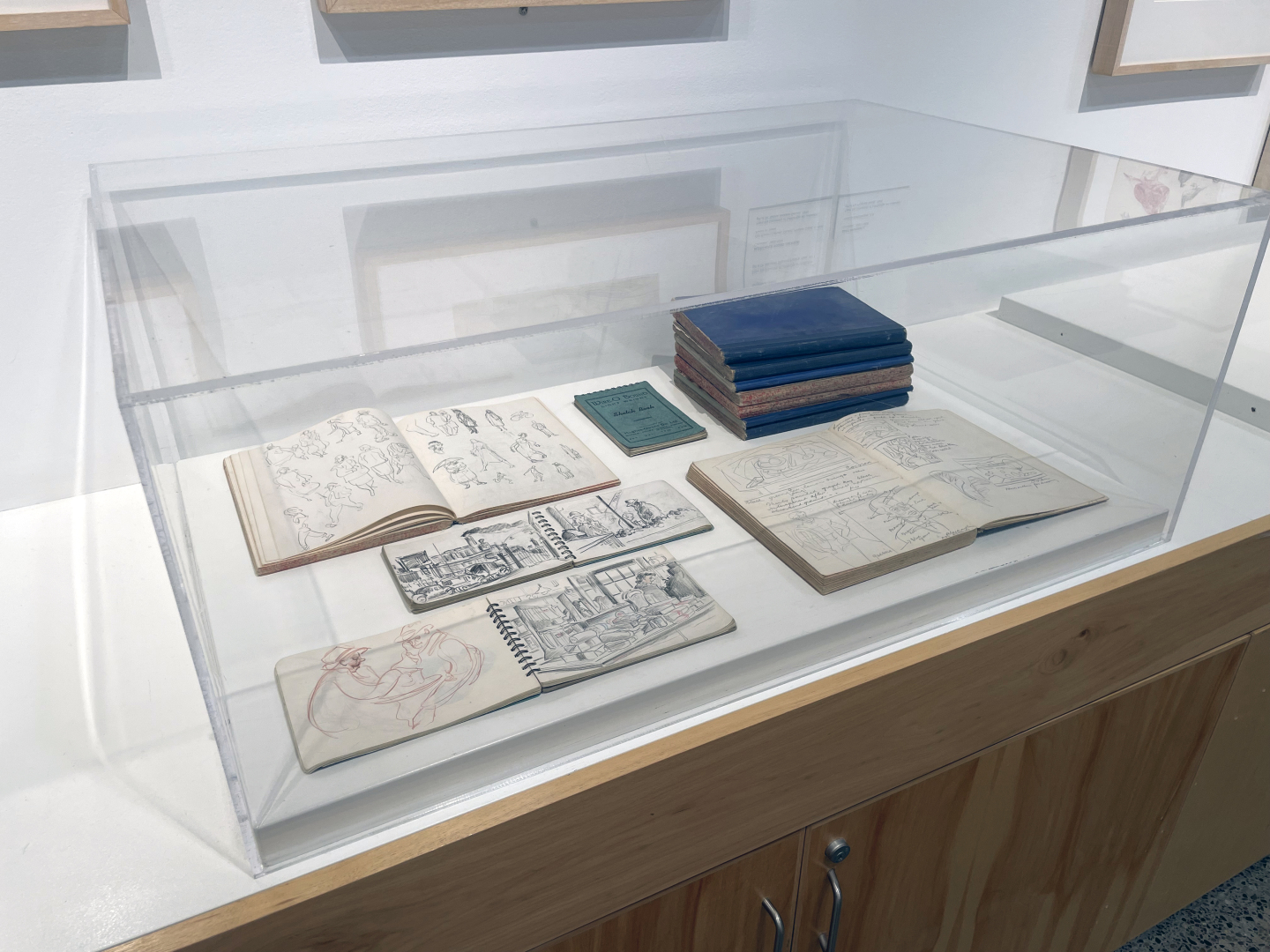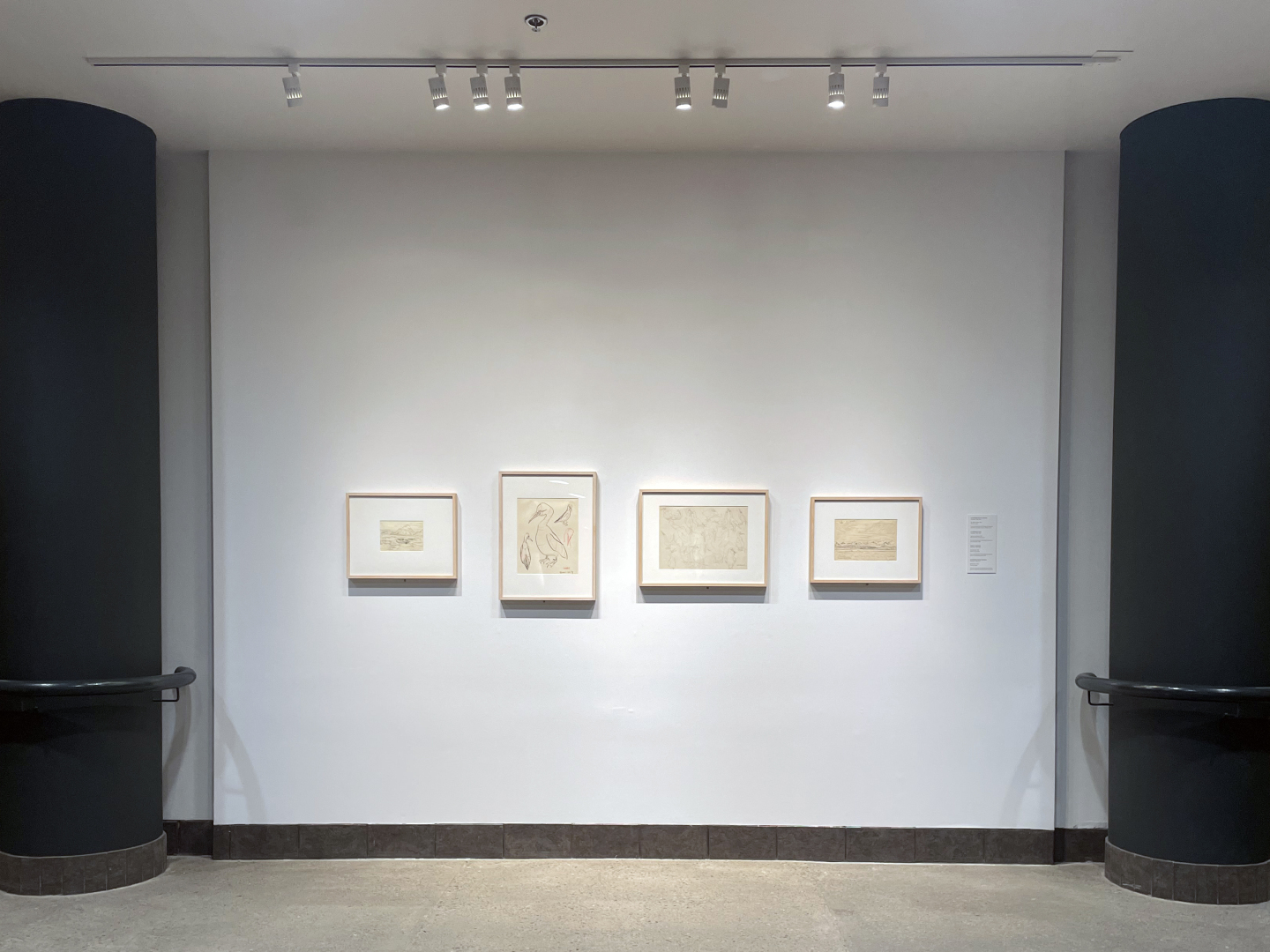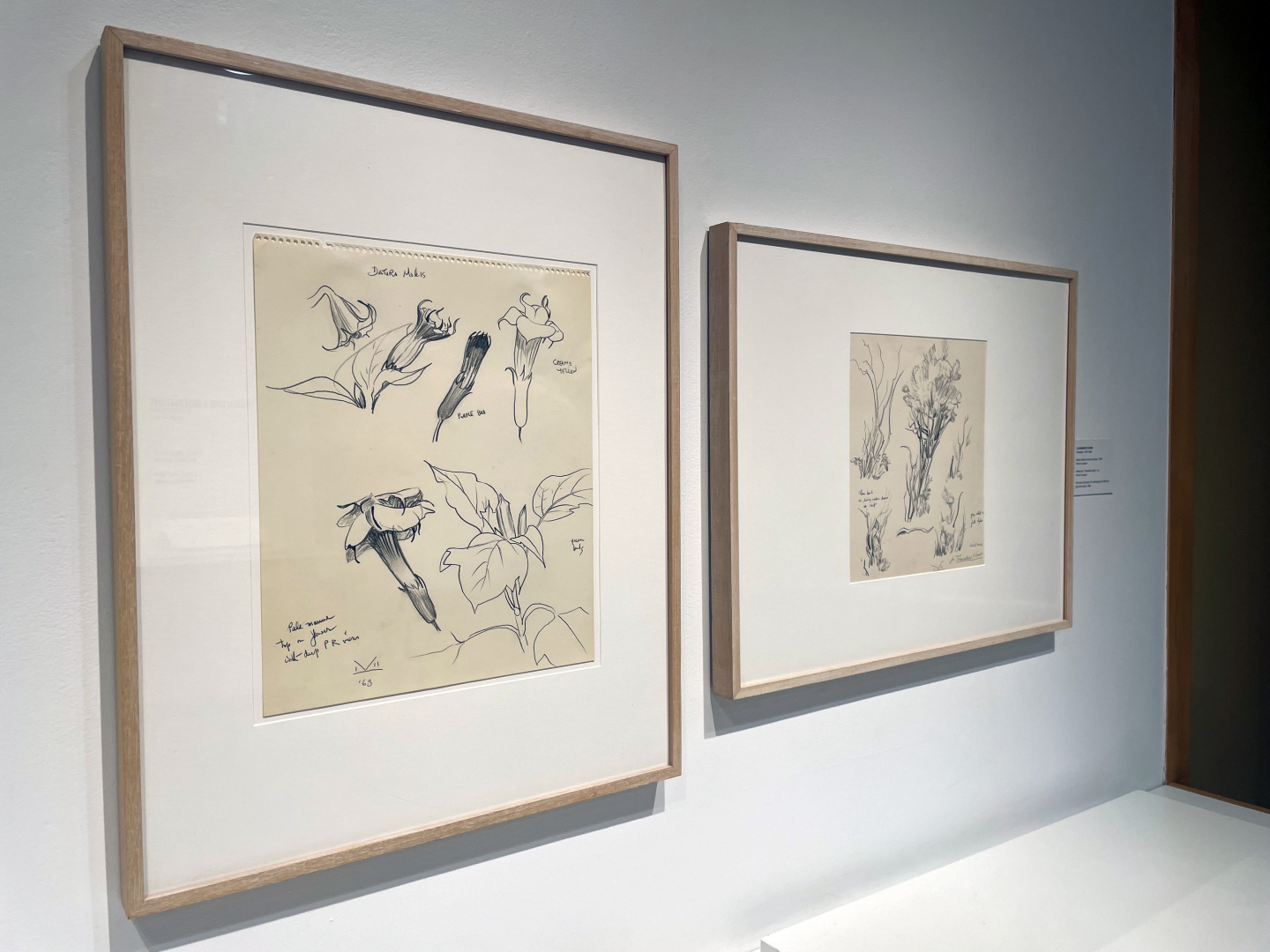Helen Christou Gallery
Annotations & Observations
September 26, 2025 – January 10, 2026
Curator: Jessica Colley, Curatorial Assistant
Sketches and Studies from Across Canada
This exhibition highlights the sketchbook as a space of exploration and personal reflection. Through intimate markmaking, handwritten notes, and personal codes, “Annotations & Observations” offers a rare glimpse into how artists see, think and develop ideas.
Curatorial Statement
Sketchbooks are often seen as tools used to prepare for something bigger – but they are so much more than that. Sketchbooks are intimate spaces of thought, risk and discovery. They are where artists record impressions, test ideas, and allow creativity to unfold without the pressure of perfection. Sketches and studies are incredibly important – despite often being omitted from gallery spaces in favour of finished works – and offer a rare glimpse into how artists see, think, and develop ideas.
When selecting pieces for this exhibition, I focused on artworks that could reveal some of the processes artists use in sketching that are often unseen in a finished piece. Some approaches were purely practical: A.Y. Jackson, for example, developed a numerical system to capture tonal values during his time as a War Records artist in World War I, assigning light and shadow on a scale from one to ten. On the field, speed was as important as accuracy. Jackson used this system for the rest of his life and proved to be essential when sketching out on the prairies, where shifting skies threatened to transform a scene in minutes. Many artists adapted similar systems, adding colour codes that later served as vital guides in the studio.
For other artists, like Illingworth Kerr, such systems served only as a starting point. Kerr’s interest was not in translating exactly what he saw, but rather what he experienced in his seeing. His sketches would often expand beyond the subject at hand, noting surroundings such as the mood of a sky or the wildlife surrounding his initial subject matter. Kerr’s animal sketches, often made during his time as Director of the Calgary Zoological Society, are some of my favorites; an animal, repeated in various poses across a single page, revealing both the time and the careful observations Kerr made in an attempt to understand his subject from every possible angle.
Sometimes a sketchbook functions less as a technical aid and more as a visual diary, as within the pages of Bart Pragnell’s sketchbooks. Quick studies of people, shops and landscapes are met with colour references and practical notes, with the odd event or meeting written in the margins as a reminder. Pragnell was rarely found without a sketchbook on hand, and this gave him ample opportunity to observe and record the world around him.
No matter the method an artist chooses, one thing remains clear: sketches and studies hold significance far beyond their role as preparatory works. While finished pieces may capture the polished, resolved vision of an artist, sketches embody the raw, exploratory moments where ideas were first imagined, tested, and refined. They serve as a reminder that the value of art is not only found in its completion, but in the processes that shape it along the way.
I would like to extend my deepest gratitude toward our Preparator / Assistant Curator, David Smith, who accommodated every desire I had for this exhibition, no matter how large, and who took the time to teach me every step involved in preparing these pieces for exhibition. None of this would be possible without you. Thank you, thank you, thank you!
Jessica Colley
Curatorial Assistant
Jessica Colley’s Appearance on CKUA’s Alberta Morning with Grant Stovel
